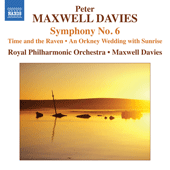Why, you might ask, do I sometimes cover music that is not strictly modern in a blog entitled Classical-Modern Review? Because, for one thing, I get sent music from all periods, and when something gets my ear I'll cover it.
More importantly classical music as we know it is a product of its history. A composer like Berio when he wrote presupposed and was grounded by the entire history of the music. What is today always includes yesterday. So how justifiably can I exclude it? That does not mean I should emphasize it either, and I do not.
Another thing: the classical music we hear today is ever evolving. Performance practice is always a fluid, ever evolving factor and by addressing particular performances we address what is happening now in that realm, even if as an example of only one. Performance practice has an important bearing on the music we call modern, of course, and so it is ever relevant.
Ultimately, in writing this blog I neither wish to be bored or be boring. By bringing in from time to time CDs that interest me in various ways but do not belong to the modern period I hope to mix it up in a non-snoozy manner.
So today I am addressing a recording of Beethoven concertos: the Triple Concerto and the Piano Concerto No. 3 (Berlin Classics 0300331BC), as performed by pianist Mari Kodama, violinist Kolja Blacher, cellist Johannes Moser, and the Deutsches Symphonie-Orchester Berlin under Kent Nagano.
The Triple Concerto has been in my collection many years, in multiple versions, and yet I never seem to connect with the work. Hearing the Nagano et al version, I think now I may know why. The various versions I have include as the three soloists various powerhouse virtuosi and they tend to approach their part as if it was at all times a kind of bravura spotlight for their prowess--and if they happen to be sharing that spotlight with two others, grin and bear it.
As I listen closely to the version at hand I hear something different, perhaps more in keeping with the music as Beethoven wrote it. Truth is, there is not a tremendous amount of bravura fireworks in the solo parts. Kodana, Blacher and Moser do the music justice by sounding like what they are, a piano trio juxtaposed against a symphony orchestra. They work together as such and make something happen that three virtuosi together-alone cannot. Nagano does a fine job with his end of the interpretation as well.
And so what we have is a version of the Triple Concerto that is very properly balanced between the individual soloists, the soloists as piano trio and the orchestra.
Kodama and Nagano go on to give us a version of the Third Piano Concerto that have these qualities once again, along with a very lyrical andante that is ravishing.
The music sings and is foremost in both works; the virtuosi element is there as ultimately it should be, as a means to realize the music.
In short these are excellent performances, and most certainly the most musical and balanced version of the Triple Concerto that I have heard.


















